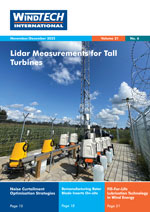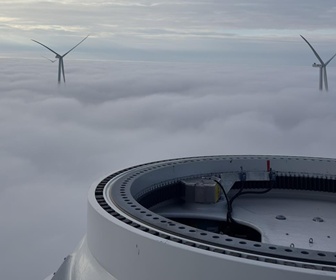Italy’s updated National Energy and Climate Plan (PNIEC) aims to increase installed renewable energy capacity from 66 GW to 131 GW by 2030. The National Recovery and Resilience Plan (PNRR) will provide €23.78 billion to support decarbonisation, with wind energy playing a key role. Installed wind capacity is projected to grow from 13 GW to 28.1 GW by 2030, with offshore wind expected to contribute significantly.
Italy has significant offshore wind potential, with studies from Politecnico University in Turin estimating 207.3 GW of floating wind capacity, making Italy the third-largest global market for floating offshore wind. The current offshore wind project pipeline in Italy is approximately 84.3 GW, with 131 planned wind farms. Despite this, only one offshore wind farm—the 30 MW Taranto project—is currently operational. Grid connection delays have been identified as a major obstacle, with 88.59 GW of offshore wind project connection requests submitted to grid operator Terna by February 2025.
Italy’s regulatory framework includes an Exclusive Economic Zone (EEZ) established in 2021, allowing offshore wind farms beyond territorial waters. Key permits for offshore projects include a maritime concession from the Ministry of Infrastructure and Transport, a single authorisation from the Ministry of Environment and Energy Security, and an environmental impact assessment decree. The permitting process involves multiple authorities and can be time-consuming.
The incentive regime for offshore wind, governed by FER 2, includes competitive tenders for projects located at least 12 nautical miles from the coast. A total capacity of 3.8 GW is available for offshore wind from 2024-2028, with a base tariff of €185/MWh for 25 years, decreasing annually by 3%. Projects must reach commercial operation within 60 months of contract allocation, with penalties for delays.
Challenges for investors include complex permitting processes, technical hurdles in developing floating wind farms, and a developing supply chain. Italy has strong industrial capabilities in shipbuilding, metal production, and advanced mechanics, which could support offshore wind growth. However, local manufacturing capacity is still developing, and foreign suppliers play a key role. Notably, Italy’s only operational offshore wind farm uses Ming Yang turbines, and a recent agreement between Renexia and Ming Yang includes plans for local turbine production to support the 2.8 GW Med Wind floating project.
This analysis is based on information from Watson Farley & Williams (WFW).










